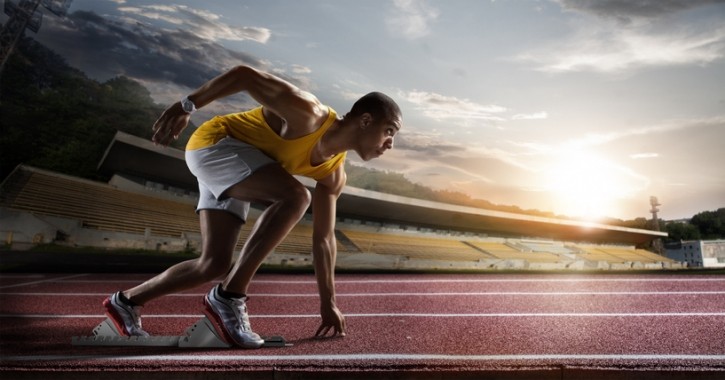Study validates formula for personalised vitamin D supplementation in athletes

Researchers from the German Sport University in Cologne conducted the study to compare the efficacy of individualised and standardised vitamin D supplement regimens for correcting insufficient 25(OH)D levels in athletes, as well as to determine the applicability of Groningen’s formula to those with possibly elevated requirements for vitamin D.
The study illustrates that an individualised approach for insufficient vitamin D status correction offers a more reliable and controlled strategy than a standardised approach. However, this also raises the question of the exact doses for the loading and maintenance phases.
Daily doses of 4000 IU were effective in correcting insufficient vitamin D status. However, the authors find that the daily maintenance dose for athletes should be higher than 1000 IU to maintain a 25(OH)D concentration of 40 ng/mL throughout the winter months.
They conclude: "Based on these conclusions, practitioners should consider regular vitamin D monitoring throughout the winter months combined with a personalized vitamin D strategy.
"The methodology employed in this study, which entails independent and decentralized sample collection coupled with an individualized supplementation regimen, is well suited for application in sports settings. This approach could serve as a model for further investigations, such as the examination of the effects of varying loading and maintenance doses in different types of athletes."
Background
While the requirement for vitamin D in athletes has not been definitively established, several investigations have indicated a significant correlation between vitamin D insufficiency and athletic performance.
These include power and strength parameters, such as vertical jump, muscle power, and mean power output in combat sports, as well as endurance parameters, such as decline in VO2max or submaximal performance on a treadmill.
Previous studies have shown a strong correlation between the prevalence of lower extremity muscle strains, core muscle injuries, and low vitamin D status. In athletes, the prevalence of stress fractures, such as leg and foot bone injuries, among musculoskeletal injuries seems to be significantly higher in athletes with vitamin D insufficiency.
Mieszkowski et al. even showed an anti-inflammatory effect of vitamin D supplementation on ultramarathon-induced inflammation in athletes with mean 25(OH)D concentrations < 30 ng/mL.
The authors of the current study note that as standardised recommendations for vitamin D intake do not exist, and due to many factors influencing vitamin D status, a more individualised supplementation strategy for vitamin D status optimisation should be targeted."A personalized approach to correct insufficient vitamin D status could be based on body weight and the 25(OH)D baseline concentration," the report notes."In 2010, Groningen et al. published a formula to correct individual vitamin D deficiencies. This formula establishes the total dose required to attain a sufficient vitamin D level of 30 ng/mL. However, the optimal method for dividing the total dose into daily doses remains unclear and, to the best of our knowledge, no data have been published on whether this formula applies to athletes."The objective of this study was to determine the applicability of Groningen’s formula in athletes.
The study
A total of 90 athletes were recruited for the study. The study duration was 10 weeks and was conducted during the winter months, between January and April, in Germany. The UV index was continuously below 3 throughout.
At baseline, 67 athletes (74%) had an insufficient vitamin D status (< 30 ng/mL); whereas, a total of 23 (26%) had a sufficient vitamin D status (≥ 30 ng/mL).
Athletes were randomized using matched-pair randomisation based on baseline 25(OH)D concentrations. Athletes with established vitamin D inadequacy (< 30 ng/mL) were randomly assigned to one of three groups: individualised supplementation (INDV), standardised supplementation (STAD), and a control group (CON).
Athletes with a sufficient vitamin D status (25(OH)D3 level ≥ 30 ng/mL) (SUF) did not receive any supplementation but were also monitored until the end of this study.
The individualised supplementation regimen was based on the formula described by Groningen et al. which was adapted from the target concentration of 75 to 100 nmol/L (30 to 40 ng/mL).
After the calculated time provided to reach the goal status of 40 ng/mL (tgoal), participants received 1000 IU daily for maintenance until the end of the study period.
Standardised supplementation consisted of 2000 IU, corresponding to two capsules, daily.
The second blood sample from the INDV group was taken 48 hours after the calculated time to reach tgoal. The second set of blood samples from the STAD, CON, and SUF groups were collected after 5 weeks.
Final blood samples from all groups were collected 10 weeks. Athletes additionally completed a vitamin-D-specific questionnaire at three time points throughout the study.
The total 25(OH)D was quantified from 20 μL Mitra tips using volumetric absorptive microsampling technology (VAMS) (Neoteryx, CA, USA).
The authors conclude that the VAMS offers several benefits for sample collection, transport, and storage, especially as it athletes to collect samples themselves at home.
In total, 50% of the INDV study group volunteers reached the target concentration of 40 ng/mL at the pre-calculated time point and 92% reached 30 ng/mL. However, after the total 10-week supplementation protocol, only 30% showed a 25(OH)D concentration of at least 40 ng/mL and 78% showed a 25(OH)D concentration of 30 ng/mL or more.In the STAD group, 17% showed a vitamin D level of 40 ng/mL or higher after 5 weeks and 38% after 10 weeks. On average, 41 ± 12 days elapsed until the insufficient vitamin D status was corrected in the INDV group.In the CON group, 25(OH)D concentration decreased over the 10-week study period (−3.8 ng/mL). The 25(OH)D concentration significantly decreased in the first 5 weeks from 21.9 ± 6.3 to 17.7 ± 6.2 ng/mL (p = 0.05, η2 = 0.48) but did not decrease further in the last 5 weeks (17.7 ± 6.2 vs. 18.1 ± 6.3 ng/mL).In the SUF group, 25(OH)D significantly decreased in the first 5 weeks (−8.9 ng/mL, p < 0.005, η2 = 0.46), as well as in the total 10-week study period (−8.7 ng/mL, p < 0.01).Similar to the CON group, the mean 25(OH)D concentration did not further decline in the last five weeks (31.6 vs. 31.8 ng/mL, p > 0.05). There was no significant difference in the decrease in 25(OH)D concentration over the 10 weeks between the CON and SUF groups (−3.8 vs. −8.7 ng/mL, p = 0.13).
The authors say the results provide evidence that the Groningen et al. formula is applicable to athletes with higher vitamin D demands, noting that replacing the target concentration of 30 ng/mL with 40 ng/mL in the formula resulted in a mean 25(OH)D concentration of 41.1 ± 10.9 ng/mL at the pre-calculated time point.
However, they point out that the maintenance dose of 1000 IU/day was not high enough to ensure the target concentration of 40 ng/mL in athletes.
The authors conclude: "To prevent a possible decline in athletic performance and long failure times due to illness or injuries, athletes need to be informed and adequately supported regarding vitamin D.
"The approach used in this study, using independent VAMS sampling for vitamin D status assessment followed by an individualized supplementation strategy, is an example of how this individual support could be implemented in sports practice. In a controlled setting, the loading phase dosage could also be adapted to the severity of vitamin D deficiency to correct 25(OH)D concentrations faster and even more efficiently.
"A potential strategy for incorporating vitamin D measurement and supplementation in sports practice could involve athletes measuring their 25(OH)D levels at the end of summer and during the winter months using a VAMS device, followed by the development of a personalized supplementation strategy consisting of both loading and maintenance doses.
"To further elucidate the effects of the formulation, future investigations should consider exploring various dosage forms for both the loading and maintenance phases.
"Further research is required to establish the connection between sports volume in elite athletes and vitamin D status, as well as to determine the optimal 25(OH)D concentrations and consistent supplementation strategies for individual sports."
Source: Nutrients
https://doi.org/10.3390/nu15224747
"Effects of an Individualized vs. Standardized Vitamin D Supplementation on the 25(OH)D Level in Athletes"
Authors: Tuma, C.; Schick, A.; Pommerening, N.; Braun, H.; Thevis, M.













